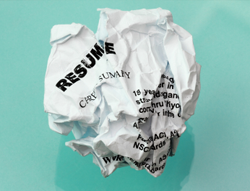Will Temp-Worker Surge Translate to Lasting Employment Gains?
25 January 2013

The good news is there’s been a surge in hiring. The bad news is that they’re temp jobs.
Recent employment surveys indicate that America’s retailers went into the holiday season expecting Santa to bring some brisk business. Analysts estimated about a three to five percent increase in holiday retail spending four our large retailers – which was enough for them to boost holiday staffing by 10 percent over previous years.
In the short run, this is no doubt a positive sign. We welcome any expression of strength and confidence among the consumer – especially if the spending is fueled by savings rather than debt.
The question, though, is this: Will the holiday hiring surge translate into an increase in permanent employment? It’s too early to tell.
Observers have been predicting a sea change toward temporary hiring, contracting and employee leasing for years. The cost of committing to new permanent employees is just too risky – especially now, with the fallout from the Affordable Care Act resulting in reams of new ObamaCare regulations on employers coming out every week. And the uncertainty over the fiscal cliff doesn’t help, either.
The potential expiration of the payroll tax holiday by itself threatens to reduce worker spending power by 2 percent, which is itself enough to make a dent in consumer demand. That effect, of course, will be magnified by layoffs and furloughs of government workers and government contractors that arise from the sequestration provisions of the Budget Control Act that threaten to take hold on January 1, 2013.
The Congressional Budget Office predicts that if Congress and the President do not reach a deal, and we do go over the ‘fiscal cliff’, the economy will incur a nasty 2.9 percent retraction in the first six months of the year alone.
Employers, naturally, do not want to expose themselves to the needless risk of having permanent employees on staff when these events come to fruition over the next two years. It is natural, then, to expect them to do only the necessary hiring, and then only on a temporary basis, while they wait to see what the future will hold.
Hurricane Sandy didn’t help. The storm took out a lot of flagship New York City retail locations and depressed demand in the Northeast at a crucial time – putting a significant damper on holiday demand and sales. Macy’s took it on the chin. Kohl’s got whacked with a 5.6 percent year over year sales decline. Wet Seal was down 5 percent. Nordstrom lost 1.1 percent in same-store sales in November.
Analysts were predicting a respectable 3.3 percent increase for these businesses over the previous holiday period. But early indications from November were disappointing, suggesting a real growth figure of around 1.6 percent. That doesn’t even account for population growth.
These declines represent a bigger chunk of business than their single digits reflect: Their costs are relatively fixed, but the revenues come out of the most important quarter of the year, by far.
That doesn’t bode well for cash reserves for these companies going into the Year of the Fiscal Cliff, followed in 12 months by the Year of ObamaCare Onset.
The tell will come in January. Last year, the retail giant Target reported it had retained about 30 percent of its Christmas temporary work force. If the recovery is real and lasting, Target will likely increase the number of trained holiday workers it retains in permanent positions.
It’s like Puxnatawny Phil seeing his shadow on Groundhog Day. If Target doesn’t increase its temp to perm retention rate in January from last years’ levels, we’re likely in for a longer winter.




